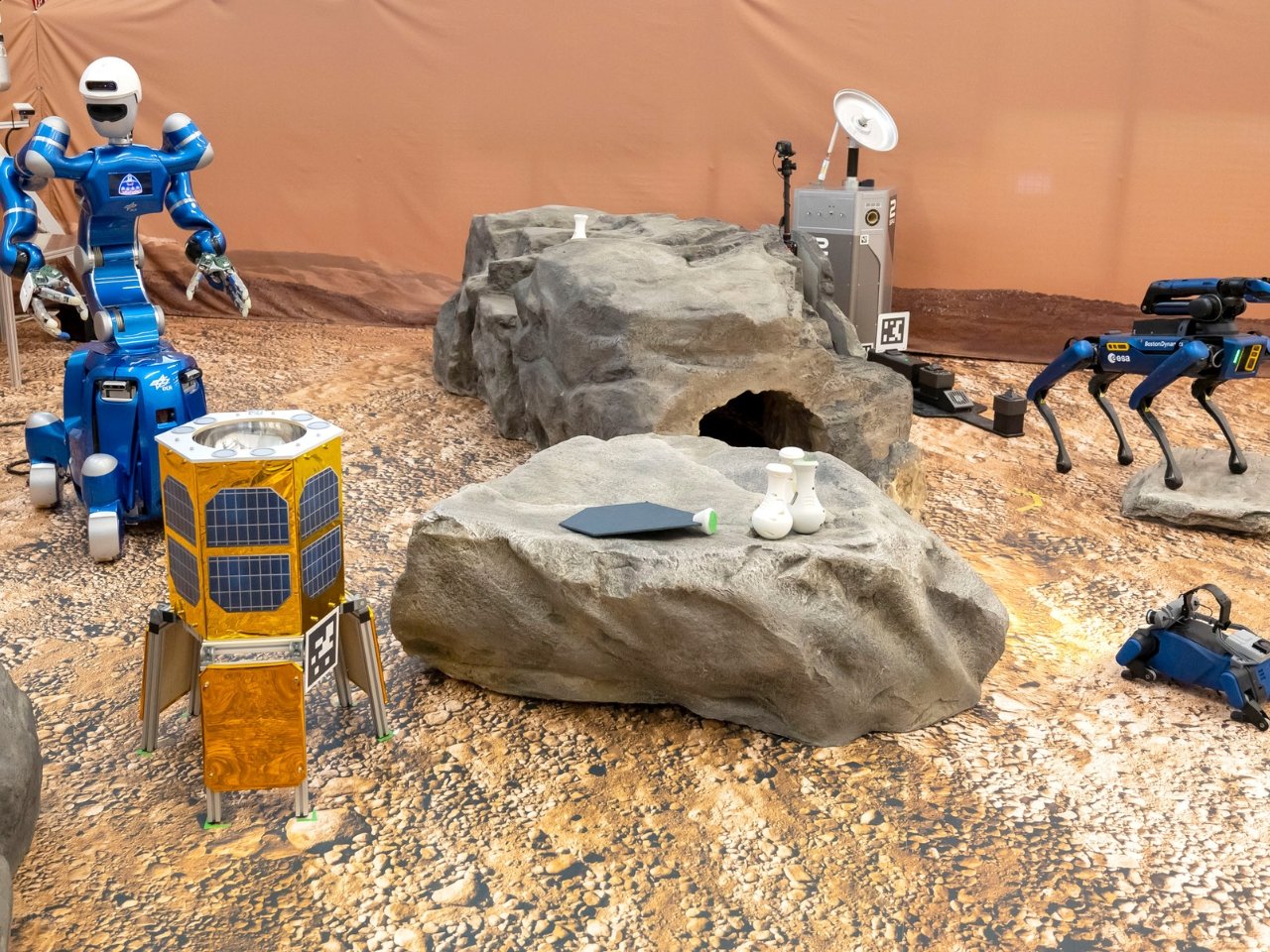Meet Bert and Spot, the dynamic robotic duo developed by the German Aerospace Center (DLR), making headlines for their innovative approach to exploring Mars-like environments. These two robots are not only technological marvels but also a glimpse into the future of planetary exploration, where humans and intelligent machines work side by side.
Bert is a wheeled rover, while Spot is a four-legged robot resembling a robotic dog, built by Boston Dynamics and enhanced by DLR’s engineers. Together, they form a versatile team designed to tackle a variety of challenges on rugged, rocky terrain similar to what future Mars missions might encounter. Their recent field tests took place in the rocky, volcanic landscape of Mount Etna in Sicily, Italy, which is considered an excellent stand-in for the Martian surface.
Designer: German Aerospace Center (DLR)
What sets these robots apart is their use of artificial intelligence and teamwork. Bert and Spot are equipped with cameras, sensors, and advanced software that allow them to navigate obstacles, analyze their surroundings, and carry out scientific tasks autonomously. During tests, they practiced searching for signs of life, identifying geologically interesting features, and collecting samples, all tasks that are crucial for Mars missions.
A key innovation in DLR’s approach is the collaboration between robots and astronauts. The team tested scenarios in which an astronaut aboard the International Space Station acted as a mission commander, guiding Bert and Spot remotely. This setup simulates how astronauts in orbit around Mars could oversee robotic explorers on the surface, combining the adaptability of human decision-making with the endurance and precision of robots.
Spot’s agile legs allow it to climb over rocks and uneven ground, making it perfect for exploring areas that are too risky for wheeled vehicles. Bert, with its stable wheels, can carry more equipment and samples. Working together, they can cover more ground and handle more complex assignments than a single robot could alone. For example, Spot can investigate a steep slope or cave, then relay data back to Bert, which can analyze the information and plan the next move.
DLR’s mission with Bert and Spot is to develop reliable systems that could one day help scientists search for signs of past or present life on Mars. The robots’ ability to work semi-independently and cooperate with humans is a major leap forward. By training these robots on Earth, engineers are preparing them for the unpredictable conditions on Mars, where communication delays and harsh environments make autonomous decision-making essential.
The collaboration between DLR, Boston Dynamics, and international partners showcases the potential of combining artificial intelligence, robotics, and human expertise for space exploration. As development continues, it’s easy to imagine a future on Mars where robotic teams like Bert and Spot are the first to scout new frontiers, paving the way for human explorers to follow. Bert and Spot are more than just impressive machines; they are trailblazers for the next generation of space exploration, showing us that the partnership between humans and robots holds the key to unlocking the mysteries of the Red Planet.
The post German robotics’ Bert and Spot explores Mars-like terrains first appeared on Yanko Design.

